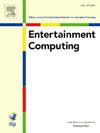利用游戏化促进学习:一个大学课程案例研究
IF 2.4
3区 计算机科学
Q2 COMPUTER SCIENCE, CYBERNETICS
引用次数: 0
摘要
游戏化意味着在非游戏环境中使用游戏设计元素,如规则、结构、自愿参与、不确定结果、冲突、决策和结果。该研究比较了大学课堂上游戏化和传统教学方法在学习成果和参与度方面的差异。两组大学生由同一位老师授课,使用相同的教材和考试,但教学设计不同。实验组使用游戏化软件Classcraft来完成作业,其中包括积分、徽章、排行榜以及社交和娱乐游戏功能,而对照组则使用传统的讲座和作业。结果表明,游戏化教学实验组学生的考试成绩较传统课堂教学对照组有显著提高。此外,研究发现,游戏化教学有几个积极的影响,如减少学习压力,增加课程乐趣,提高课堂参与度和课后学习动机。游戏化教学提高了学习参与度,这对学习成绩有积极影响,并增加了改进的范围。本研究为游戏化教学在大学教育中的应用提供了实证依据,并探讨了游戏化教学的设计原则和实际应用。该研究的结论是,游戏化可以用于大学课堂,以提高学生的参与度和学习表现。本文章由计算机程序翻译,如有差异,请以英文原文为准。
Using gamification to enhance learning: A college course case study
Gamification means using game design elements, such as rules, structure, voluntary participation, uncertain outcomes, conflict, decision-making, and outcomes, in non-game contexts. The study compares the differences in learning outcomes and engagement between gamified and traditional instruction methods in university classrooms. Two groups of university students were taught by the same teacher, using the same materials and exams but with different teaching designs. The experimental group used the gamified software Classcraft for assignments, which involved points, badges, leaderboards, and social and entertaining game features, while the control group used traditional lectures and assignments. The results showed a significant improvement in the exam scores of the experimental group of gamified instruction compared to the control group of traditional lecture instruction.
Additionally, the study found that gamified instruction has several positive effects, such as reducing learning stress, increasing course enjoyment, and enhancing both in-class engagement and after-school learning motivation. Gamified instruction enhances learning engagement, which positively influences academic performance and increases the range of improvement. This study provides empirical evidence for using gamified teaching in university education and discusses the design principles and practical applications of gamified teaching. The study concludes that gamification can be used in university classrooms to improve student engagement and learning performance.
求助全文
通过发布文献求助,成功后即可免费获取论文全文。
去求助
来源期刊

Entertainment Computing
Computer Science-Human-Computer Interaction
CiteScore
5.90
自引率
7.10%
发文量
66
期刊介绍:
Entertainment Computing publishes original, peer-reviewed research articles and serves as a forum for stimulating and disseminating innovative research ideas, emerging technologies, empirical investigations, state-of-the-art methods and tools in all aspects of digital entertainment, new media, entertainment computing, gaming, robotics, toys and applications among researchers, engineers, social scientists, artists and practitioners. Theoretical, technical, empirical, survey articles and case studies are all appropriate to the journal.
 求助内容:
求助内容: 应助结果提醒方式:
应助结果提醒方式:


